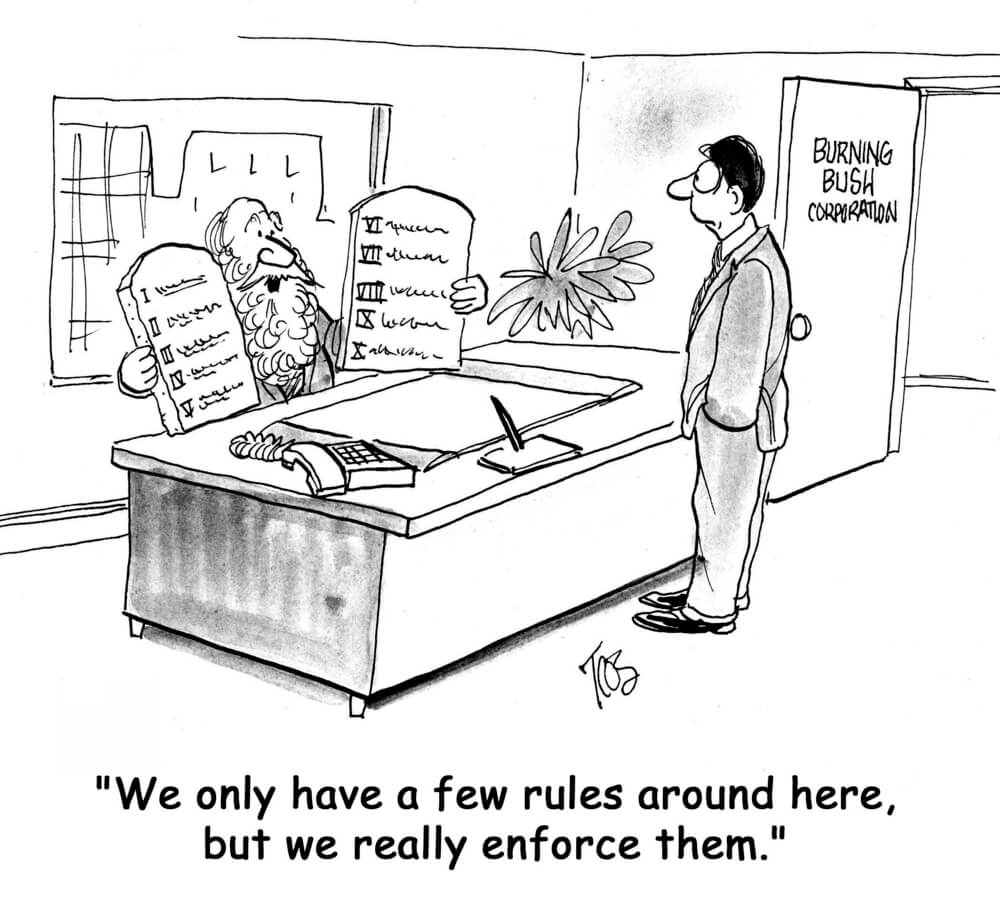Last Updated on July 1, 2023 by Dave Schoenbeck
All too often, small business owners only create policies and procedures after a problem has been identified. As a result, leaders sometimes have difficulty understanding why workplace policies and procedures are important until they get into trouble. It’s always better to be proactive about boundaries in business rather than reactive, and here’s why. 
What Is the Purpose of Policies and Procedures at Work?
Policies and procedures establish a framework that keeps every employee on an even footing. They outline expectations and leave no room for doubt regarding behavioral and performance evaluation. Therefore, having these written out is essential so employees can reference them and everyone is on the same page.
Employers might think too many policies can cause employees to feel stifled or overly restricted, but the opposite is usually true. Employees feel secure when they know what is expected of them, and managers can lead more effectively when they can cite specific, well-written workplace policies when a team or employee is out of line.
Boundaries in business are suitable for your employees; rather than creating a sense of confinement, knowing exactly where the boundaries are encouraged employees to explore the full scope of their potential. When unclear rules, people tend to err on caution and refrain from creativity and innovation.
How to Implement Policies and Procedures
If you haven’t been stringent about developing policies and procedures for your workplace in the past, don’t panic. As long as you’re transparent with your team about the reasoning behind your policies and what they are, they can quickly get on board.
There are a few steps to implementing a new policy. The first step is to identify a gap where an approach would be beneficial. You must then write the policy carefully, ensuring you’re clear and direct in your expectations. Finally, you must notify your employees of the procedure and provide it in a written form they can reference.
Communicating with your employees about why a policy exists is a good idea. Many employees will feel called out if they’ve violated the new approach in the past without knowing. Let employees know that the slate is clean but that new expectations are moving forward. You should also let them know why the new policy will be helpful.
When developing a new policy, you might consider opening the floor to feedback before being set in stone. Although you have the final say in whether a policy is implemented, your employees might be able to provide a new perspective or help you word it in such a way as to eliminate room for error in interpretation.
Once you know why workplace policies and procedures are essential, you can implement them accordingly. However, this is just one aspect of the leadership experience. If you want more information on managing teams and setting boundaries in business, sign up for my email newsletter to have leadership articles delivered straight to your inbox.
Coach Dave
[/vc_column_text][/vc_column][/vc_row]

